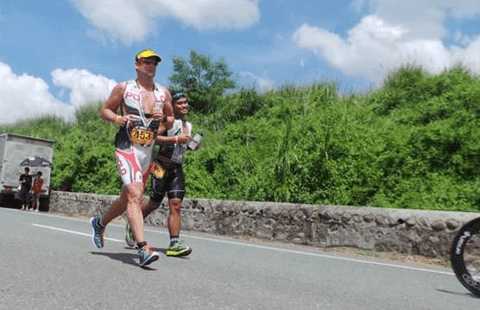Speed Kills. Does It?

DOES SPEED KILL? It’s that all important and exciting time of the year again for all of us, the race season is well and truly done now and hopefully you have all had a period of rest and chilling out letting the body recover from the stresses of training and racing. This time of year is exciting as we are looking forward to new goals and setting a training plan up to help achieve them.
I see a lot of athletes at this time and it amazes me still that they all talk about building a solid aerobic fitness base over the winter as the first step, it really frustrates me that this idea has become so set in peoples mindsets and I see it as the main hurdle people need to get over in order to progress their fitness and really step forward towards their goals.
I truly believe at this time of year starting a program that speed and strength are the main areas we should all be focusing on. In this article I want to look at speed and take away your fear and look at how we can use speed to accelerate progression and also prevent injuries in the long run.
Firstly when I say speed people immediately think sprinting and then injury, over stretching and pushing the boundaries with speed sure does bring a huge injury risk and this is the case whenever sprinting is put into a program. When I say speed though I am not talking about sprinting I am simply talking about faster paced work.
When we are racing and training for Ironman, speed training is actually not going to be that fast at all as the race speed is so slow, I would then class anything above race pace as being speed work.
Humans really are creatures of habit and our muscles are part of that, if we always train just one speed we will get good at one speed and shock the body when we try to do something different which can easily lead to injury. Doing weeks of base training to prepare the body for faster work actually therefore is counterintuitive, all it is really doing is preparing the body to really not like speed! So if we follow the age old pattern of building base over the winter and then adding speed in the final weeks before the race season starts we are going to be in a situation where speed kills performance through injury.
I think the true sense would be to have elements of speed built into every week so the body is used to the movement patterns of going fast and the muscles have trained and adapted to speed so we are not putting an unknown stress on them suddenly as race season dawns.
Also when we train slow we only use a very small percentage of muscle fibres within a given muscle, if we are constantly training one speed we will continue to only train this small percentage of muscle fibres leaving the others untrained and unprepared. When we are racing, and especially in prolonged endurance events such as Ironman, we are going to fatigue our muscles and if we have only trained a small percentage of our muscle fibres then as soon as these get tired we have nowhere else to go. By training with speed we train a fuller spectrum of our muscle fibres and give the body something to fall back on when our endurance dominant fibres are too fatigued to take the workload.
Let’s look at some sessions that are still endurance based but have an element of speed built in that will pay back come race day.
Endurance ride with short sprints
So one way we can use speed to train more muscle fibre is to add in short all out sprints early on in an endurance ride, we can look at it this like flicking a light switch on. If we just go out and ride easy our body is lazy and will just use a small percentage of muscle fibre to perform the task. By adding in a small set of sprints we flick a switch and activate all fibres and then when we go back to easy endurance riding the load is shared over more fibres thus getting a much more productive training effect. I am sure you have all experienced this at some time when out training due to terrain, say you have a hard short hill that requires a big effort to get over – you may have been feeling tired and lethargic before the hill but suddenly once over and back on the flat you have a lot more power and energy – this is because you have switched on more muscle fibres to get over the hill and they will now continue to work to share the workload on the flat making you feel stronger and more energetic.
So if your endurance ride is 4 hours let’s look to ride 30minutes easy and then put in a short set of sprints, 10 second sprints are enough to get the muscles working without leading to any real fatigue. Ride 8×10 seconds all out allowing your cadence to accelerate during the 10s to maximum and then ride very easy for 1 minute 50 seconds before starting your next sprint. If you ride in a group or with a friend you can add a little fun to this by sprinting for landmarks, choose something close as it is all about that initial acceleration that activated the muscle fibres we want working!!
Run efficiency
While the above is an example of all out speed I also use a lot of speed work around race pace, by training slightly above race pace we can make our bodies more efficient at movement. Studies have shown that movement efficiency is the key to success in endurance performance. Let’s look at a run session that is focused on efficiency of movement. Let’s say you are looking to race at 12km per hour on the run for the full marathon distance, I would then put a set of short intervals into a weekly program that is based around a speed of 13km/hr. An example would be a treadmill session of 10×400 at 13km/hr with 60seconds easy between. This session will always feel relatively easy but resist the temptation to add speed, over time this is an invaluable session that you will appreciate come race day.
When it comes to using speed training in your program it does not always mean pushing the limits and risking injury, it can be done in a controlled way to really unlock some great advances in your fitness.
Do something different this year in your training and you will be amazed at the progress you can make over doing your regular winter of base miles!
Enjoy your training.
By : Coach Alun “Woody” Woodward / IronGuides.net
For : SWIMBIKERUN.ph










